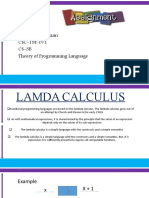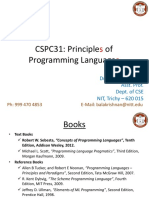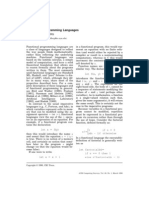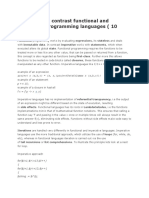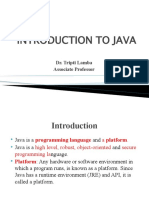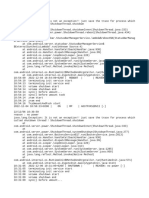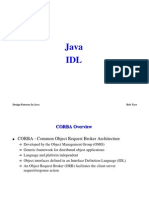0% found this document useful (0 votes)
69 views46 pagesL1 Introduction
Functional and logic programming languages take an applicative approach rather than a procedural approach. Functional languages emphasize evaluating expressions using functions while logic languages focus on logical assertions and using resolution to derive answers. Some benefits of functional and logic languages include being more mathematically based, easier to prove correctness, and treating functions as first-class values.
Uploaded by
hemant singhCopyright
© © All Rights Reserved
We take content rights seriously. If you suspect this is your content, claim it here.
Available Formats
Download as PDF, TXT or read online on Scribd
0% found this document useful (0 votes)
69 views46 pagesL1 Introduction
Functional and logic programming languages take an applicative approach rather than a procedural approach. Functional languages emphasize evaluating expressions using functions while logic languages focus on logical assertions and using resolution to derive answers. Some benefits of functional and logic languages include being more mathematically based, easier to prove correctness, and treating functions as first-class values.
Uploaded by
hemant singhCopyright
© © All Rights Reserved
We take content rights seriously. If you suspect this is your content, claim it here.
Available Formats
Download as PDF, TXT or read online on Scribd
/ 46







